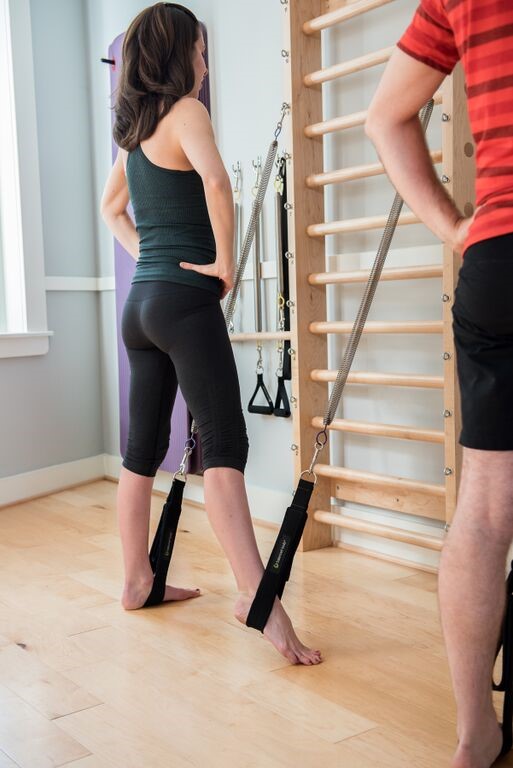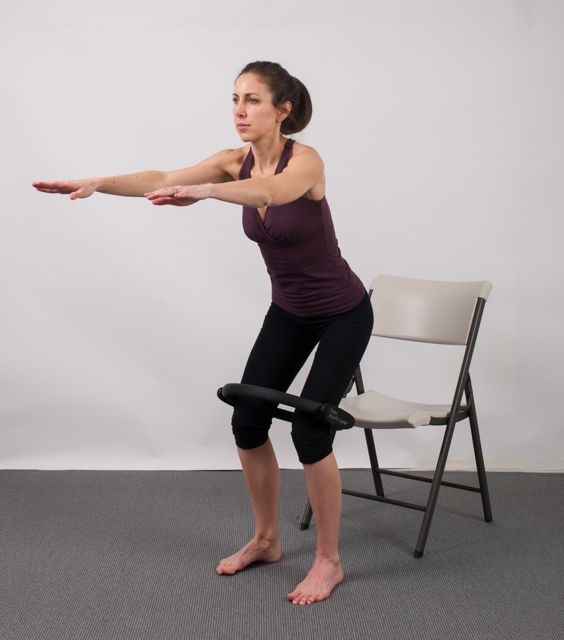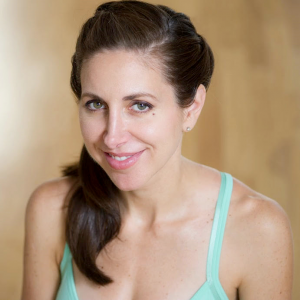Pilates Isn’t Enough
By Mariska Breland
Don’t get me wrong, I loooooove Pilates. Love it. I love classical Pilates, contemporary Pilates, and all of the apparatus. We have the best toys. The best. No one has better toys than us.
I have been teaching and doing Pilates since the early 2000s. When I was diagnosed with multiple sclerosis in 2002 after years of inexplicable symptoms, I got really into it. I couldn’t run anymore, so Pilates took its place. And part of what I loved was that I was pretty good at it, regardless of whether my leg worked exactly right anymore. I felt myself getting stronger, my abs looked amazing, and I had the best arm definition of my life.
Throughout the past 15 years, I have dabbled in other fitness activities – gym workouts, barre, yoga, distance swimming, pole dancing (!!), and personal training. Pilates has always taken top billing.
But being able to do candlestick on the Cadillac does not make you walk better. (It does boost your self-esteem, so there’s certainly nothing wrong with it!). I love the Pilates inversions because they make me feel like a badass, even though I’m a 40-something year old woman with a couple of decades of MS under her belt. I even started an Instagram hashtag for it – #flipoverfriday. I’m pretty proud of my Instagram page, filled with stuff I can (still) (now) do. But in full disclosure, I’m editing out the times where my MS-affected leg doesn’t do what I would like it to do.
As someone with a chronic neurological condition, I can tell you that I didn’t do myself any favors during the years that I did Pilates and not much else. Why? Disability in MS sneaks up on most people. You are walking along, mostly fine, and then suddenly, you’re dragging your leg. Your balance is a little off. You start walking funny, and then you can’t walk in a straight line. Or walk on your heels.
Pilates is sorely lacking in standing and balance work. Yes, there are the standing arm springs. Yes, there’s Going Up Front on the chair. There are Russian squats and the splits. But in the vast majority of your Pilates session, you are supine, prone, or seated. Plus, some of the standing work doesn’t even come into your sessions until you’ve been doing Pilates for a long time. And then, it’s 5-10 minutes of your entire workout – tops.
Persons with neurological diseases need to be standing and walking. “Use it or lose it” could not be truer for our population. I was doing Pilates multiple times a week for years, and that did not stop my walking from declining.
So, what’s a girl to do? Give up Pilates? Absolutely not. But supplement it with standing work? Definitely.
I live in a city, so I have ample opportunity to walk. I walk to work. When it’s hard to walk, I still walk to work. I have a treadmill in my home, so on the days where I don’t have a reason to need to walk, I walk. I make myself walk, and in doing so, it has become easier to walk. That’s because you not only make muscles stronger, but you are strengthening the connections between nerves. You can even build new wiring in your brain.
I’ve come to think that’s not even enough. I don’t want to just be able to walk OK; I want to be able to play tennis again. I need better hip and ankle stability that I have, so I started working with a personal trainer. I know the exercises that will lead to better hip and ankle stability, but if I’m being honest, my motivation to do things like squats and lunges (yawn) is infinitely higher when I’m paying someone to tell me to do them. And since I am an overachiever who wants to make him happy with my progress, I do more similar exercises at home.
In my Pilates for Neurological Conditions courses, I teach countless gait, balance, and standing exercises. Teachers who are trained in my method will get their students standing during sessions. The exercises in that training aren’t traditional Pilates exercises because Pilates doesn’t have enough. Sorry, Joe. I had to use your principles and make up some exercises of my own.
So, I created a workout on a souped-up version of Swedish bars that includes a minimum of 30 minutes of standing squats, lunges, and balance work. The class has become popular at my studio, and we’re currently working on licensing and franchising. It’s not just me that needs these challenges in her fitness repertoire.
 And, I’m working more on the exercises I teach in my Pilates for Neurological conditions courses as well.
And, I’m working more on the exercises I teach in my Pilates for Neurological conditions courses as well.
One of my biggest issues is spasticity in my left leg, which causes it to live in a constant state of slight internal rotation. My left hip is weaker and when doing squats, my left knee drops in. So, I add a magic circle to a lot of my exercises (and I teach this in my courses since this problem is very common). Here’s a photo of me looking not too excited about squats from the textbook for my course. The hips are one of the main keepers of balance, so for everyone (but especially for neurological clients), it’s important to keep them strong.
 Did Joseph Pilates do all these things I’m doing? I don’t know. Perhaps if he got me as a client, he would have. Because the exercises that he came up with that are for everyone, aren’t enough for me.
Did Joseph Pilates do all these things I’m doing? I don’t know. Perhaps if he got me as a client, he would have. Because the exercises that he came up with that are for everyone, aren’t enough for me.
The private Pilates sessions I take weekly are classical Pilates. And I can do some awesome classical Pilates. It’s not perfect, but it’s pretty darn good. I want my walking to be as good as my Pilates. So, I need to stand, lunge, squat, and walk more. I’ll most likely never be a runner again, and I’ll always be a Pilates student. But I want to not be a runner because I choose not to run, not because I can’t physically do it.
 In 1999, acting under the fear of a slowing metabolism, Mariska took her first Pilates class. After a 2002 diagnosis of MS, she became a devoted yoga and Pilates practitioner and taught her first class a year later.
In 1999, acting under the fear of a slowing metabolism, Mariska took her first Pilates class. After a 2002 diagnosis of MS, she became a devoted yoga and Pilates practitioner and taught her first class a year later.Learn more about Mariska here. You can also visit her website or Pilates Anytime to take a class or workshop.

